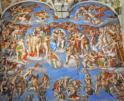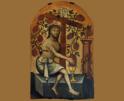
Faith
Pitre pulls together things usually kept in discrete boxes: spiritual theology, Scriptural exegesis, the teaching of the Church Fathers and the saints, and the practices of the Christian life.
During Lent, we focus on prayer, fasting, and almsgiving in order to repent and turn our lives back to God. The 40 days of this holy season invite us to unite ourselves to Jesus's own prayer and fasting in the desert, where he battles the enemy in overcoming fundamental temptations of life: lust of the flesh, lust of the eyes, and pride of life. Only through Jesus's own fidelity to the Father can we, too, overcome these fundamental threats to our souls.
As we focus on these central Lenten themes, Brant Pitre's book, "Introduction to the Spiritual Life: Walking the Path of Prayer with Jesus," offers insights on how Jesus himself lays the foundation for our ascetical practices. In each chapter, he demonstrates how Jesus built upon and perfected the teaching of the Old Testament and laid the foundation for the life of the Church. Pitre pulls together things usually kept in discrete boxes: spiritual theology, Scriptural exegesis, the teaching of the Church Fathers and the saints, and the practices of the Christian life. After an initial section on prayer, showing the biblical roots of vocal prayer, meditation and contemplation, Pitre's second part is what initially caught my attention in relation to Lent.
This section, "The Spiritual Path," begins with the first step of repentance, moves into how we can examine our conscience through the Ten Commandments, engages the three temptations in the desert as representative of the human struggle against sin, and then offers the three remedies that Jesus provides against them. "In the Sermon on the Mount, Jesus gives his disciples three spiritual exercises -- prayer, fasting, and almsgiving as antidotes to 'the lust of the flesh and the lust of the eyes and pride of life' (1 John 2:16)" (70). As Christians, we must overcome the temptations of pleasure, possessions, and pride by following the path that Jesus himself laid out for us. We refrain from eating to tame the cravings of the flesh, taming our interior dispositions through our bodily practices. We break free from the dominance of our possessions by offering them freely to those in need while ministering to Christ hidden in the poor. Finally, by giving us the Our Father, Jesus helps us to overcome our pride by coming before God in humility, becoming a beggar before him.
For the second section alone, I would recommend "Introduction to the Spiritual Life" for Lenten reading, but thankfully there is more. The third section, "Vices and Virtues," provides a perfect next step to continue the battle begun by entering into the three primary spiritual practices of Lent. This section uses the seven deadly sins as its organizing principle: pride, envy, anger, avarice, lust, gluttony and sloth. While no exact list of these sins can be found in the Bible, Pitre notes that Proverbs speaks of "seven abominations" (Prov 26:25) and teaches against all seven explicitly and offers a list of virtues opposed to them: humility, mercy, meekness, generosity, chastity, temperance, and diligence.
Moving through these seven sins and virtues, Pitre invites the reader to ask, "Which of these capital sins am I most inclined to commit? Which of these is my principal fault? Be sure to pay close attention to what happens in your heart as you read about each of the seven capital sins . . . The identification of our predominant fault is a crucial step in beginning to root out vices and starting to grow in virtue" (108). This section becomes a vivid reflection in self-knowledge, putting into practice the basic principles of prayer covered in the earlier sections. Another Lenten connection emerges in relation to lust: "If through fasting we learn to control our cravings for food, we will also learn to control our cravings for other physical pleasures. If we discipline our bodies through regular physical labor, we will grow in self-control, and self-mastery in other areas. If we struggle with lustful thoughts and images in our minds, then we need to fill our imagination with the beauty of Scripture by memorizing it and meditating on it daily" (162).
The final section, "Making Progress," lays out important principles for the continued growth needed to bear fruit in prayer and holiness. Topics include examination of heart, "lectio divina," the dark night, and the living water of God's life within us. However, the one that stands out most for Lent is the battle of prayer. If we truly enter the desert with Christ for 40 days of prayer and fasting, we will have to fight against distraction and dryness and focus on perseverance, things that will guide us throughout our life, enabling us to cling to God even with "desperation and tenacity" (227).
Overall, Pitre's book makes for excellent Lenten reading, enabling us to enter the battle of prayer armed by the wisdom of Scripture and tradition against the three great temptations and the seven deadly sins.
Recent articles in the Faith & Family section
-
The kingdom of ChristJaymie Stuart Wolfe
-
Pilgrims of hope -- Holy Year of 2025Father Robert M. O’Grady
-
Honor Mothers at Home and In the MissionsMaureen Crowley Heil
-
On the vineScott Hahn
-
What is the church's position on the treatment of animals?Jenna Marie Cooper


















